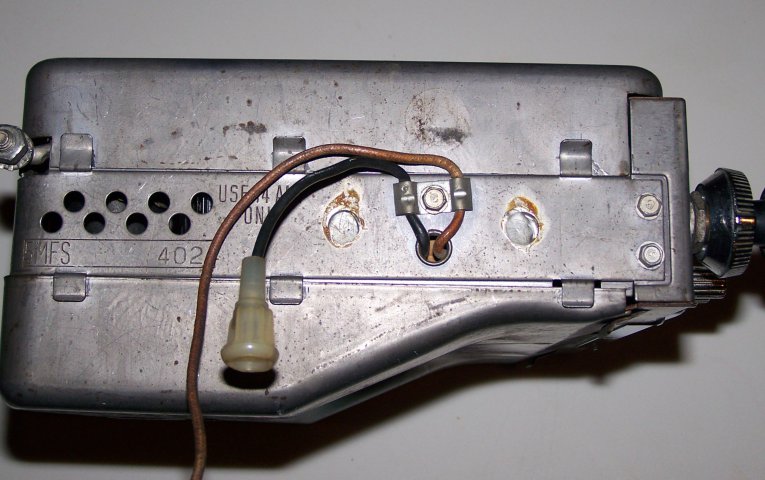Doug has provided some great information, but I would challenge one thing -- the 7.5
amp fuse for 12 volts. Yes, most 6 volt cars use a 14 amp for the radio, and 12 volt equivalents use 7.5
amp fuses, and this is generally because a tube car radio made to run on 12 volts will typically draw only half the current. But we're not dealing with the original radio, but an aftermarket stereo. Use whatever fuse it's called for. If you continue using your 6 volt radio on a 12 volt car, using some big dropping resistor, that radio will still draw the same current as before and will still require a 14
amp fuse.
Doug had a very good write-up on these radios, but I'll add to it. Pre-war car radios drew about 10-11 amperes. Yes, that dynamic speaker drew between 2 and 3 amps all by itself! How far we've come! Older speakers used an electromagnet, and that "field
coil" drew current. On home radios it doubled as a power supply filter, but most car sets just ran it off the 6 volts. About 1940 they began switching to permanent magnet types, and after the war most all radios had PM speakers -- but some radios were wired for that field
coil in case a replacement might be an older type. That's why the speaker plug for Ford radios had three pins when only two are generally used.
Mid-1950's, two things happened: First, the automakers got smart and migrated to 12 volts, and at the same time most all of them went to negative ground. The second thing was the advent of transistors. Although there were a couple of all-transistor sets made in the beginning, notably the 1956 Imperial and the 1957 Cadillac Eldorado, most new radios came in the form of hybrid -- some tubes, some transistors. Tubes require a power supply because the plates will not work on only 6 volts, but with 12 volts there are some small-signal tubes that indeed work. So the expensive, bulky, and unreliable power supply was eliminated, tubes were used in the front end, and transistors were used for the audio. Why continue using tubes in the front end? Because they're quieter. Ever turn up the volume on a weak signal and hear that hissing noise in the background? Or tune to an unused channel on your (conventional) TV and see snow? That's noise being generated in the tuner itself. Transistors were noisy. Of course in a few years the design improved to the point where all-transistor sets became practical.
I can go on and on but that's enough. Transistor car radios draw considerably less current, but even newer stereos with higher power will draw more current again -- if the volume is turned up. So bottom line, use whatever fuse your stereo calls for.



